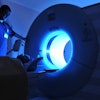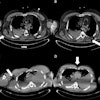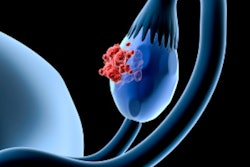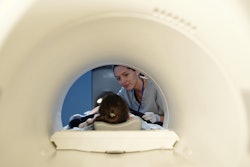Deep learning can assess low muscle quality on CT images as a predictive tool of mortality after transcatheter aortic valve implantation (TAVI), suggest findings published on 17 June in Clinical Nutrition ESPEN.
Researchers led by Dennis van Erck from the University of Amsterdam in the Netherlands found significant ties between higher mortality risk in TAVI patients and low muscle quality as assessed by the deep-learning approach.
“Our findings suggest that deep learning-assessed low muscle quality, as indicated by fat infiltration in muscle tissue, is a practical, useful, and independent predictor of mortality after TAVI,” van Erck and colleagues wrote.
To accurately diagnose sarcopenia, clinicians must evaluate muscle quality via the amount of fat infiltration in muscle tissue. The more fat that infiltrates the muscle, the lower the muscle quality.
TAVI is a procedure that aims to improve a damaged aortic valve. Here, an artificial valve made of natural animal heart tissue is implanted into the heart. Previous reports indicate that the mortality rate for TAVI patients ranges between 20% and 30%.
Van Erck and co-authors studied whether they could independently predict mortality risk in TAVI patients by using automatic deep-learning algorithms to assess muscle quality on procedural CT scans.
The study included 1,199 patients with severe aortic stenosis who underwent TAVI procedures between 2010 and 2020. Preprocedural evaluations included CT scans that were analyzed using deep learning-based software (Quantib version 0.1.0, Rotterdam, Netherlands) to automatically determine skeletal muscle density and intermuscular fatty tissue. The researchers performed survival analyses using Kaplan-Meier analysis for the lowest sex-specific tertiles of muscle density and intermuscular fatty tissue.
The model showed high sensitivity, but low specificity in measuring density and fatty tissue.
| Performance of deep-learning model in measuring skeletal muscle density, intermuscular fatty tissue | ||
|---|---|---|
| Skeletal muscle density | Intermuscular fatty tissue | |
| Sensitivity | 0.93 | 0.92 |
| Specificity | 0.08 | 0.07 |
| Area under the curve (AUC) | 0.54 | 0.55 |
The patients had an average age of 80 years and 53% of the study population was female. The team reported a median observation time of 1,084 days and the overall mortality rate was 39%.
The deep-learning approach linked the lowest tertile of muscle quality with higher mortality risk as determined by skeletal muscle density, including a hazard ratio (HR) of 1.4 (p < 0.01). The team reported a similar trend for low muscle quality and high intermuscular fatty tissue in the lowest tertile (HR, 1.24; p = 0.04).
“This association remained significant even after adjusting for other predictors of mortality, including muscle mass,” the team wrote.
The study authors highlighted that new deep-learning methods can easily measure muscle quality, which can be used as a screening objective in routinely performed CT scans. This can lead to improvements in detecting and diagnosing sarcopenia in elderly patients, they added.
However, pending follow-up studies, the authors suggested that their method is “best suited as an initial screening tool” to identify high-risk TAVI patients, citing the deep learning approach’s high sensitivity but low specificity.
The full study can be found here.




















